This cycled the action while a rotating cog wheel fed cartridges from the belt.
After firing, a spring connected to the hinge forced the lever back to its original position.
The gun was equipped with a tripod to prevent the operating lever from digging into the ground.
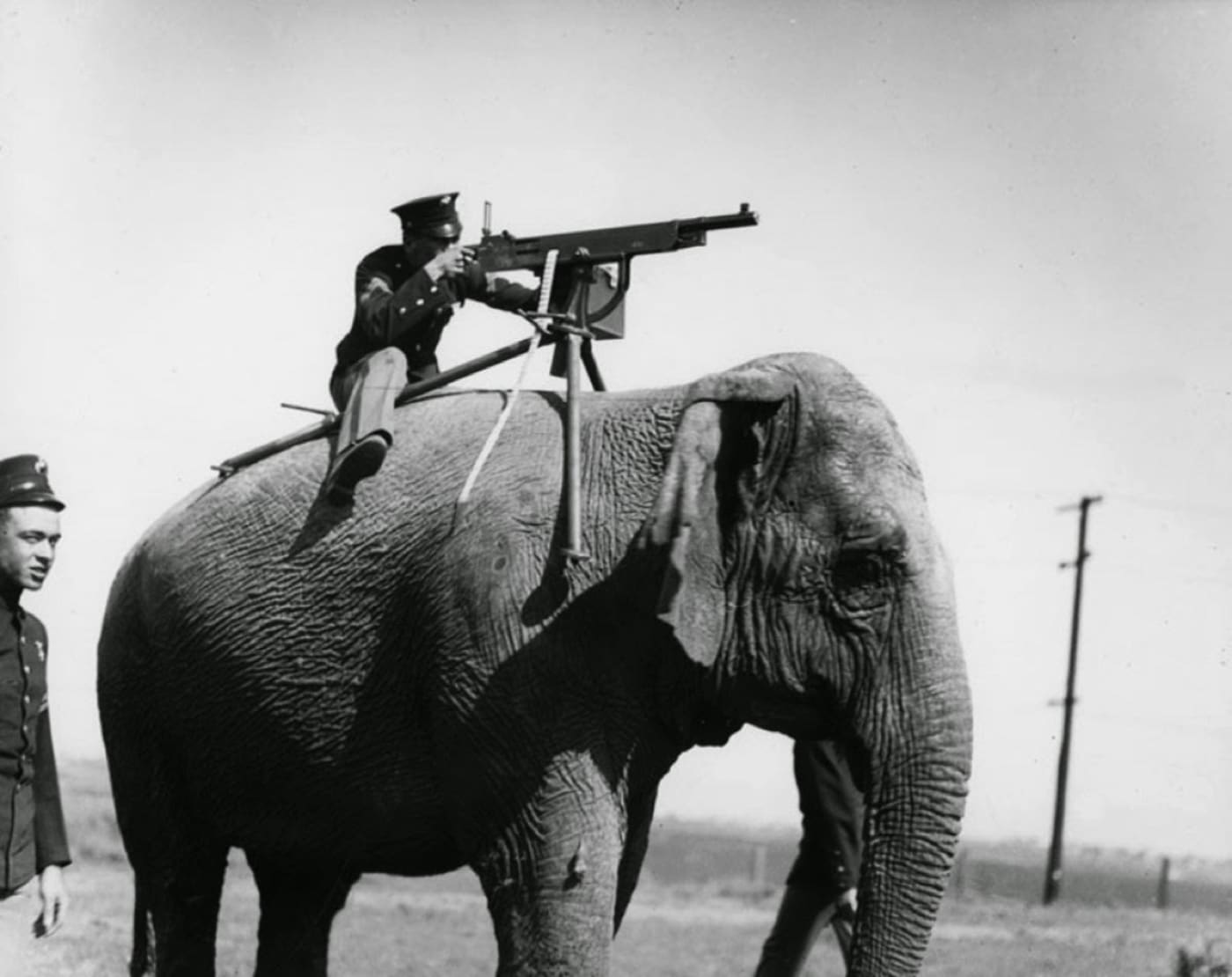
A United States Army soldier aims his M1895 machine gun while riding an elephant in Sri Lanka circa 1914.
Although not formally adopted, it was the first gas-operated machine gun to enter U.S. military service.
Admittedly, the new gas-operated design was not a big hit with the U.S. Army.
They believed the weapon to be a fad and were still very fond of Mr. Gatlings gun.
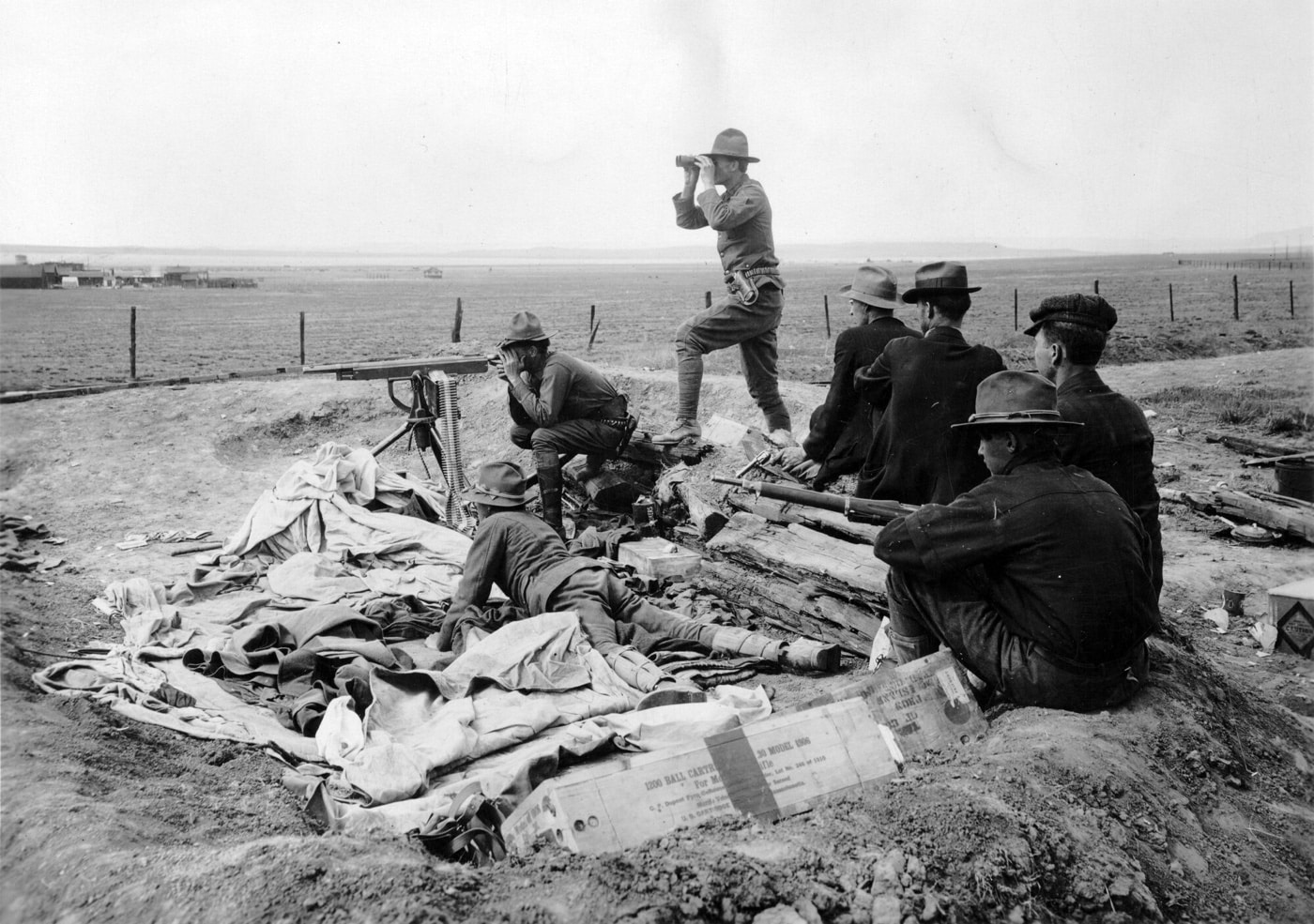
Colorado National Guard soldiers at the scene of a coal miner strike in Ludlow, Colorado, in 1914. This was part of the 1913-1914 Colorado Coalfield War. The M1895 is the machine gun near the center of the photo.
However, The U.S. Navy was interested and ordered 200 of the new guns.
The unit comprised Ivy League athletes, Native Americans, Texas Rangers and a few outlaws.
The entrance requirements were horse riding skills and the desire for combat.
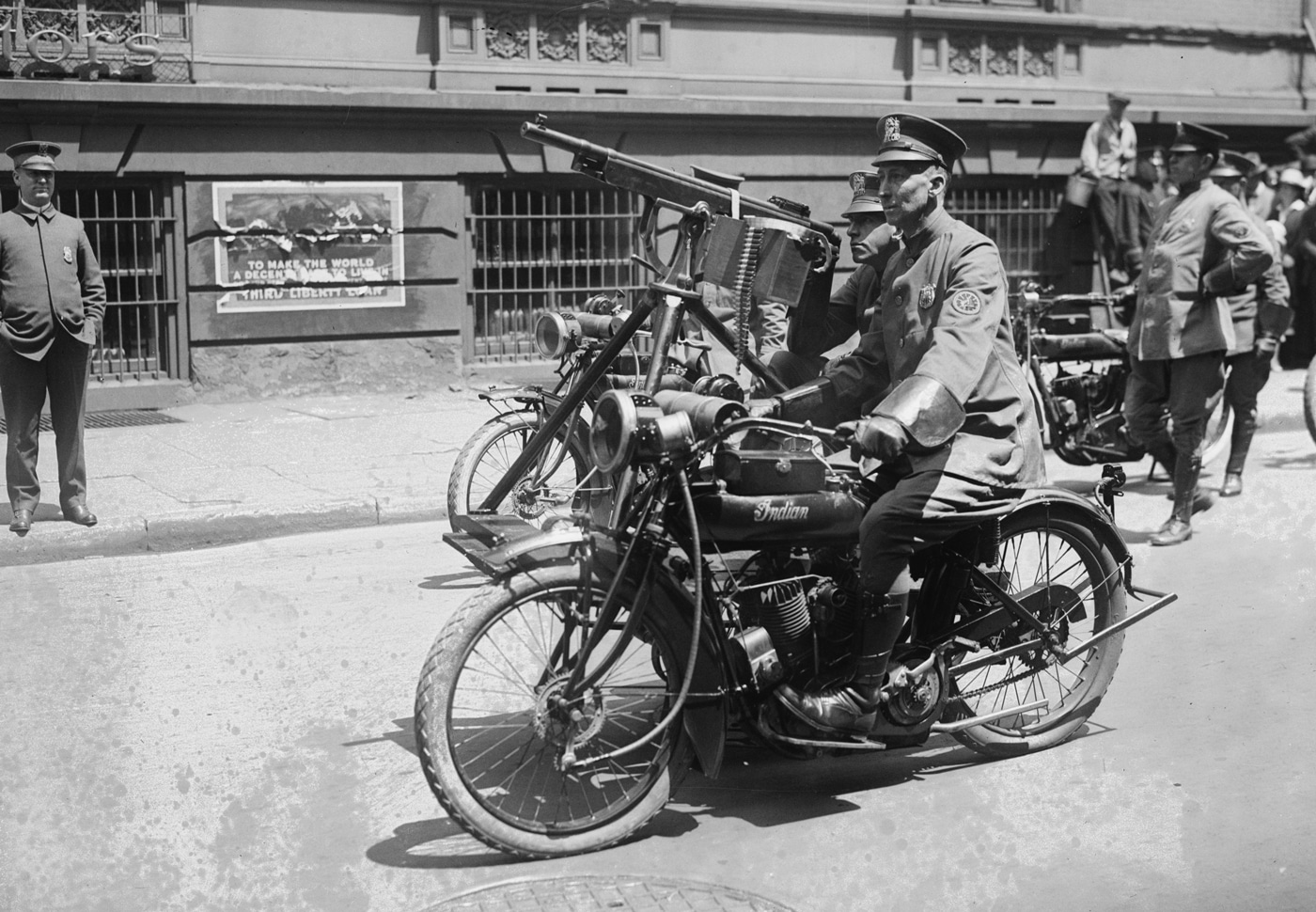
NYPD officers riding an Indian Motorcycle with a mounted M1895 machine gun in a parade that took place in New York City on May 11, 1918. Image: Library of Congress (LoC)
The M1895 machine guns supported the charge, using almost all the 4,000 rounds of ammo on hand.
When the smoke cleared, ammo was replenished from the captured Spanish Mausers that were also chambered in 7x57mm.
Also, in 1900, Canadian troops successfully used the M1895 machine gun during the Second Boer War.
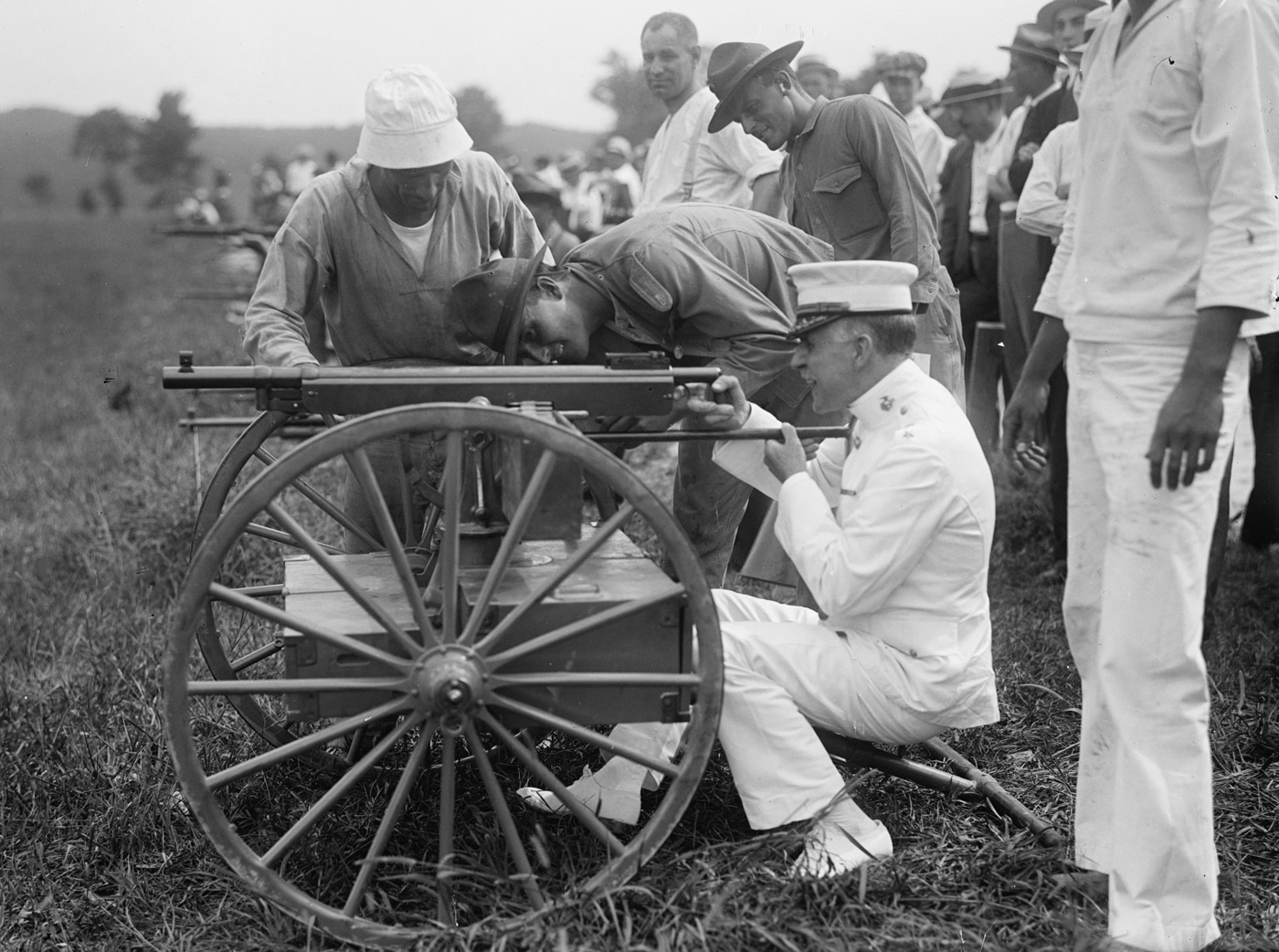
Gen. George Barnett, Commandant of the United States Marine Corps, shoots a M1895 “Potato Digger” machine gun at the shooting range in Winthrop, Maryland.
At the same time, the Vickers proved superior endurance with its water-filled jacket.
Another issue was ammo boxes falling apart and ammo falling out of belts while marching.
Overall, the M1895 was determined to be conclusively unsuitable for service.
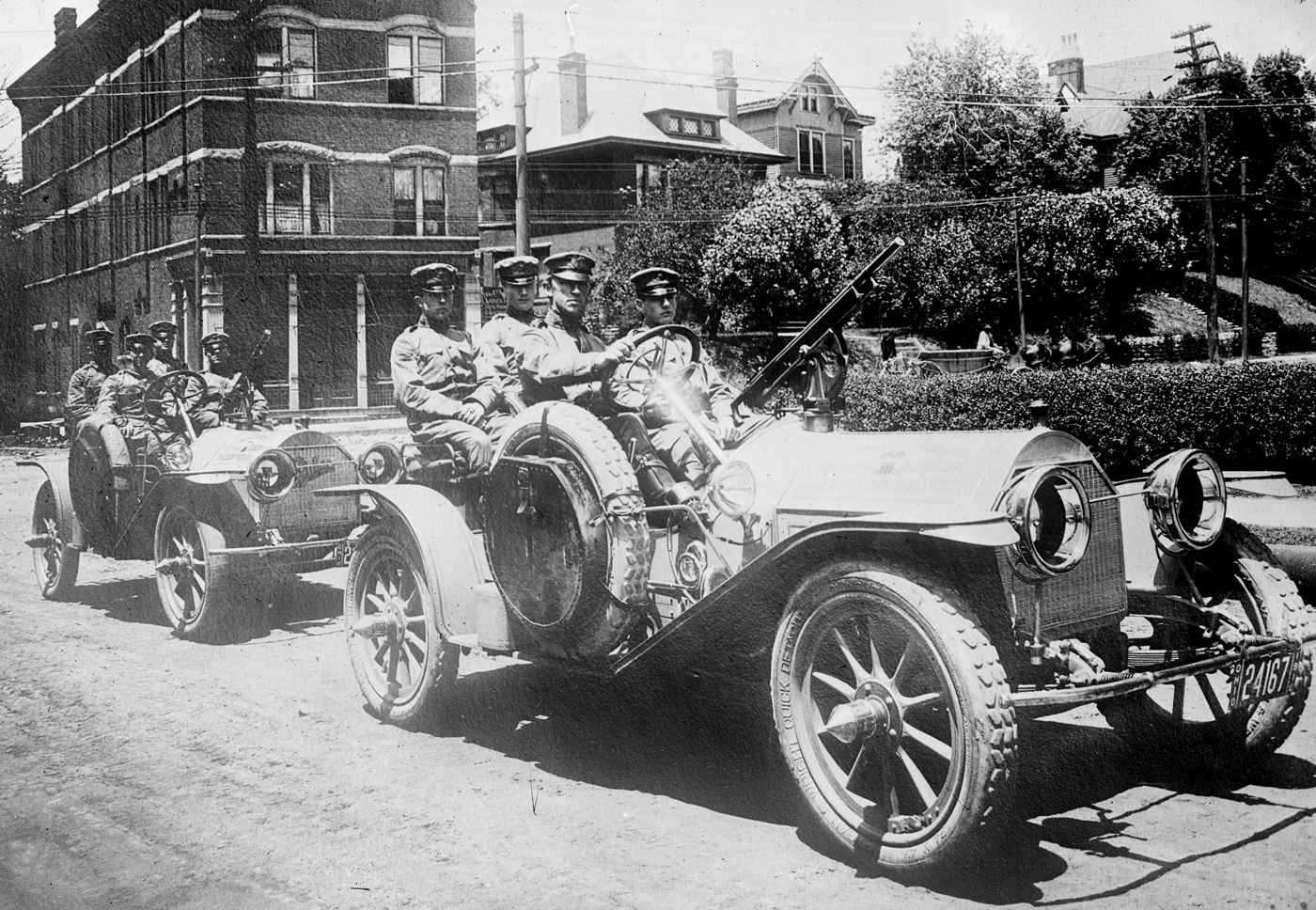
A U.S. Army balloon destroyer unit participates in a Glidden Tour circa 1913. The automobiles are equipped with M1895 machine guns. Image: Bain News Service/LoC
The U.S. Army reconsidered the design and purchased 2,500 M1917 guns to be used for machine gunner training.
Although improved, the new gun was still not a big success.
The Potato Digger was obsolete by the time the U.S. entered the war.
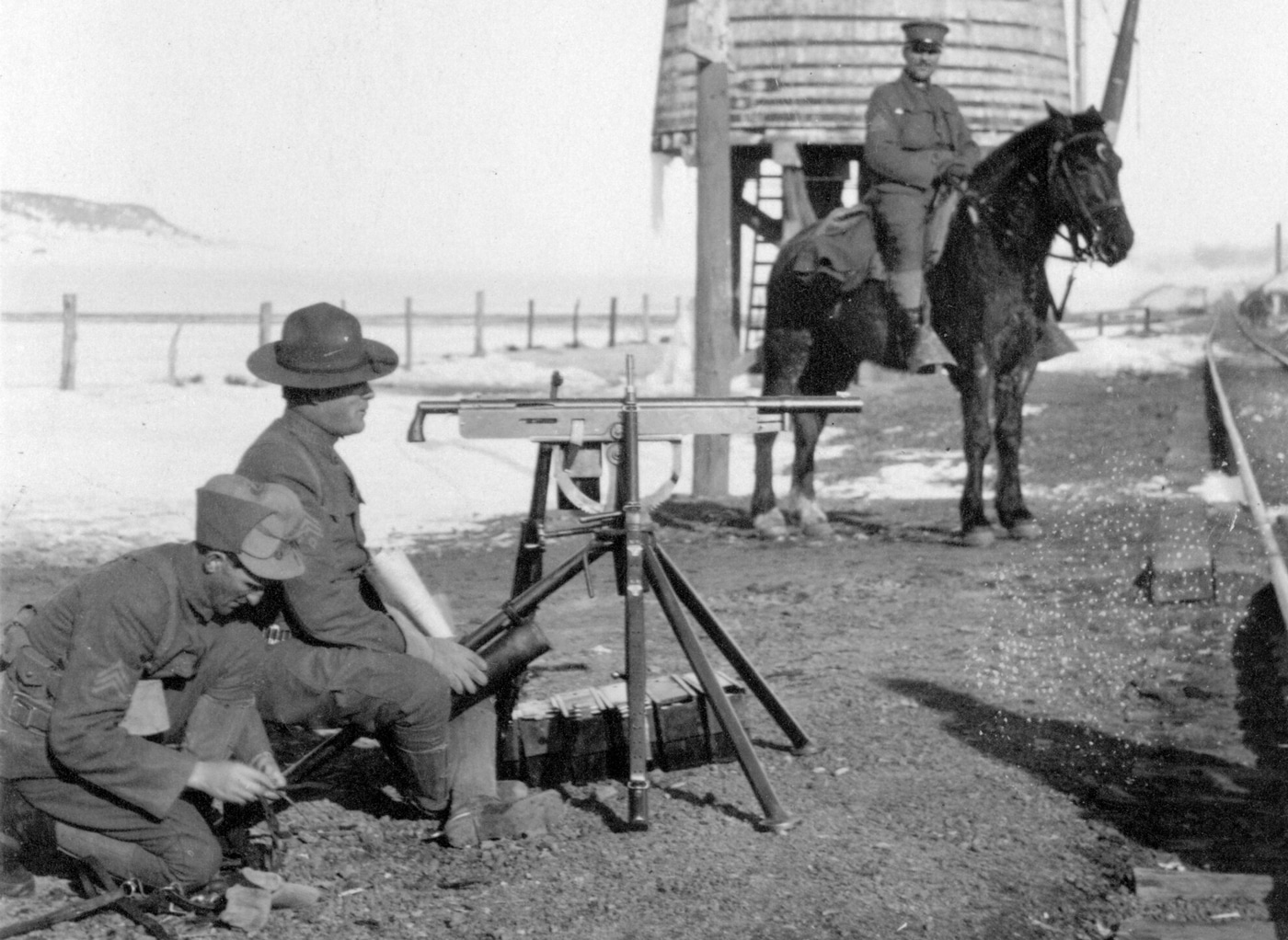
The M1895 machine gun pre-dated more advanced and reliable designs like the Lewis Gun. Nevertheless, it saw action in the Spanish-American War and other conflicts around the world.
At the beginning of World War I, some armies found themselves in need of machine guns.
The Russian Empire purchased nearly 15,000 chambered in 7.62x54mmR.
The West Virginia National Guard intervened in the battle after approximately one million rounds were fired.
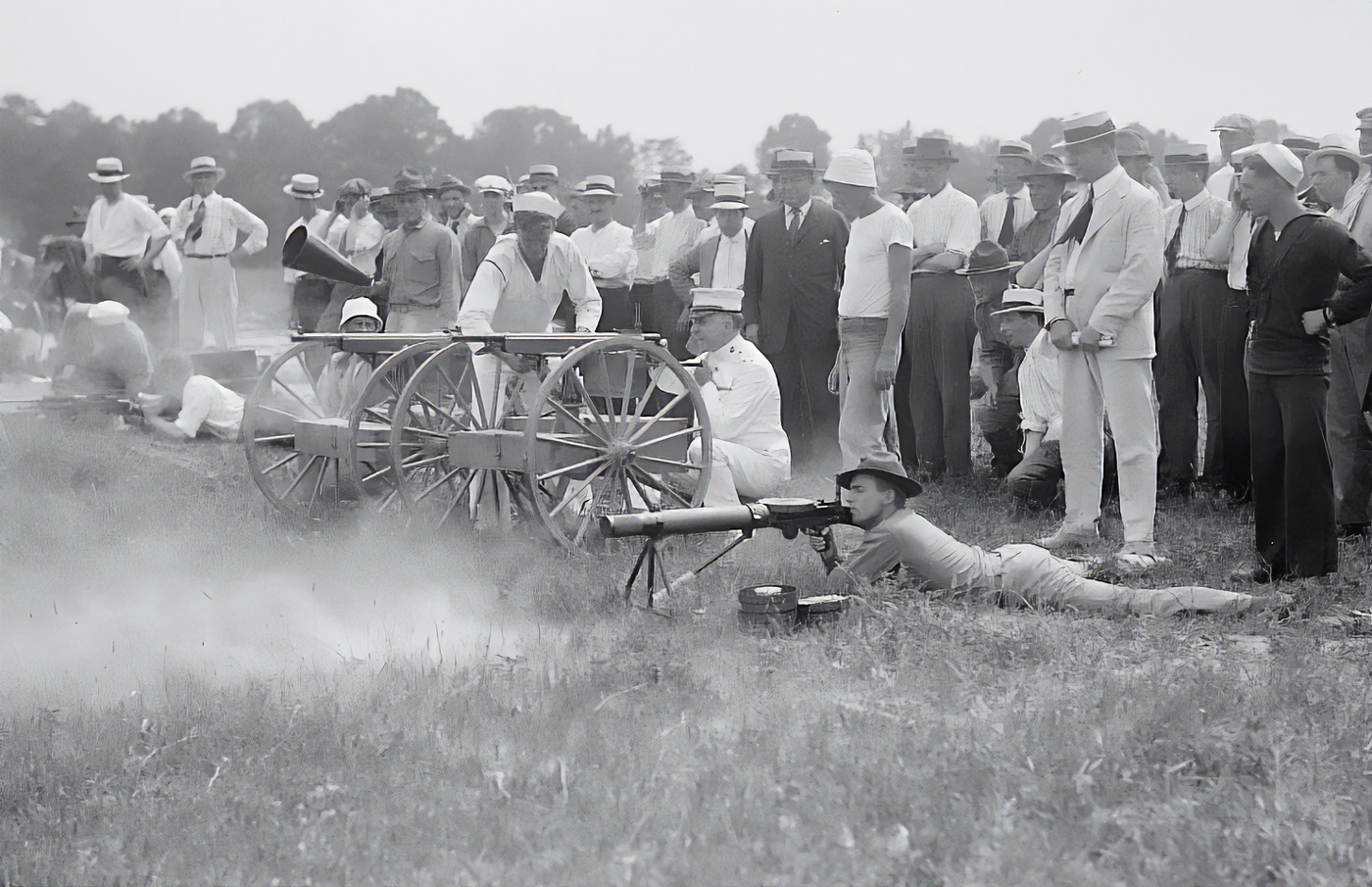
Gen. George Barnett, Commandant of the United States Marine Corps, tests the M1895 machine gun mounted on a gun carriage. On the ground, a Marine fires aLewis Gun. Image: Harris & Ewing/LoC
The Belgian army acquired many 7mm Mauser M1895/14 versions near the end of World War I.
They were kept in storage and issued to certain reserve infantry regiments before the outbreak of World War II.
They were used in combat during the German invasion of Belgium in May 1940.
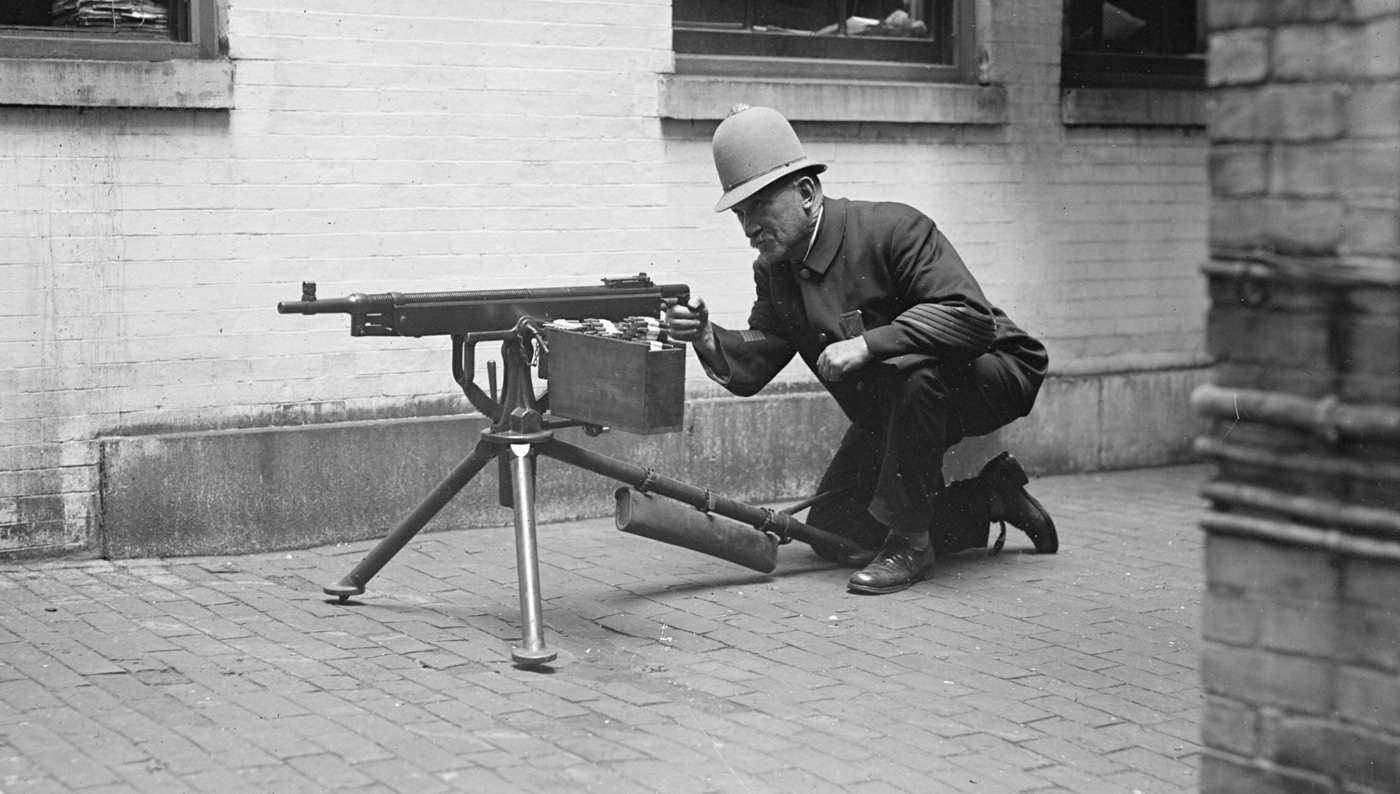
In 1919, the Boston Police Department acquired M1895 machine guns to handle communist insurrections.
)and theM2 .50 caliber Ma Deuce, which is celebrating over 100 years of service.

Sgt. John Davis of the Colorado National Guard poses with a Potato Digger machine gun on Water Tank Hill near Ludlow, Las Animas County, Colorado. This was part of the 1913-1914 Colorado Coalfield War.
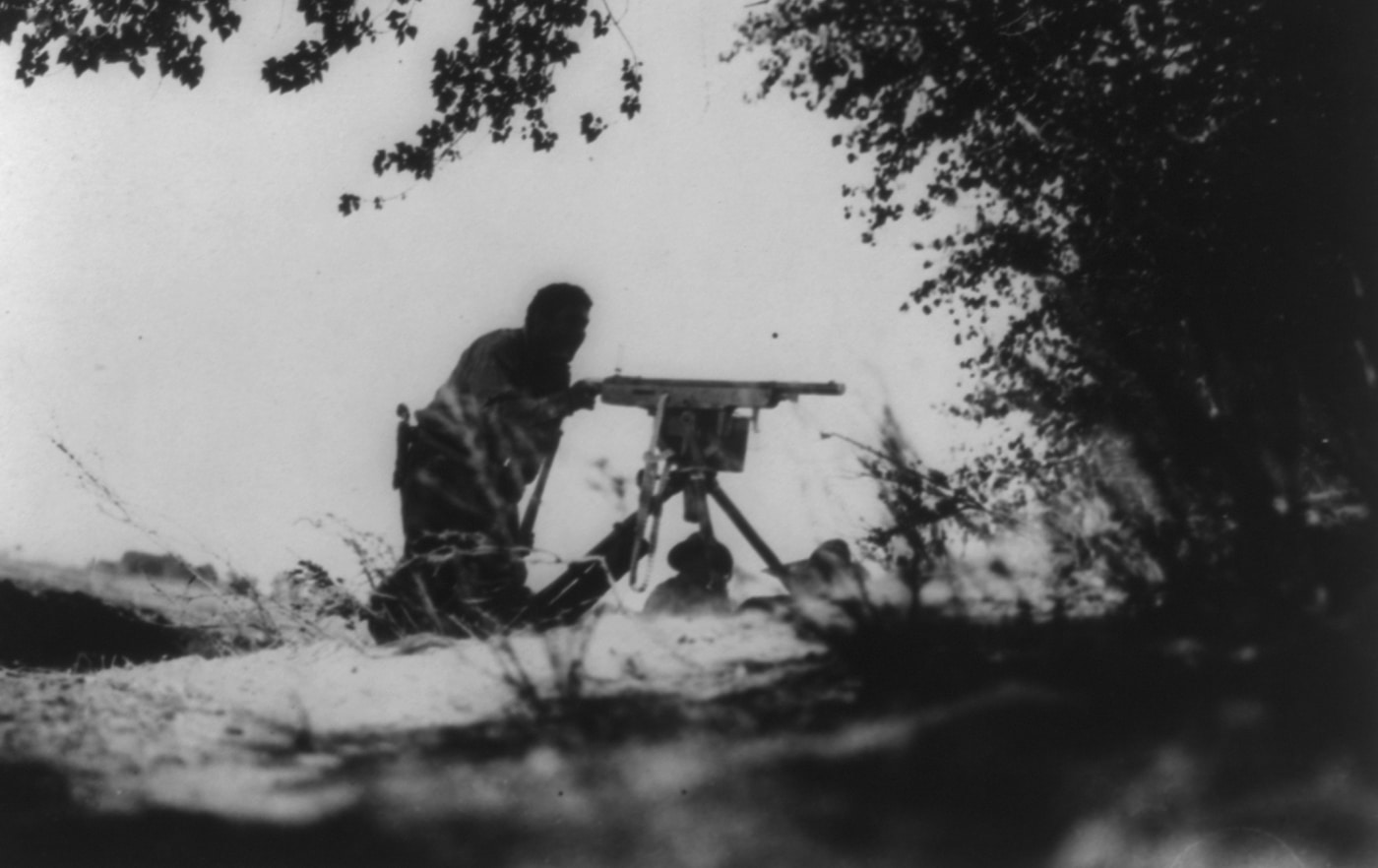
A manned M1895 machine gun during the Pancho Villa Expedition by the United States Army into Mexico. Image: LoC
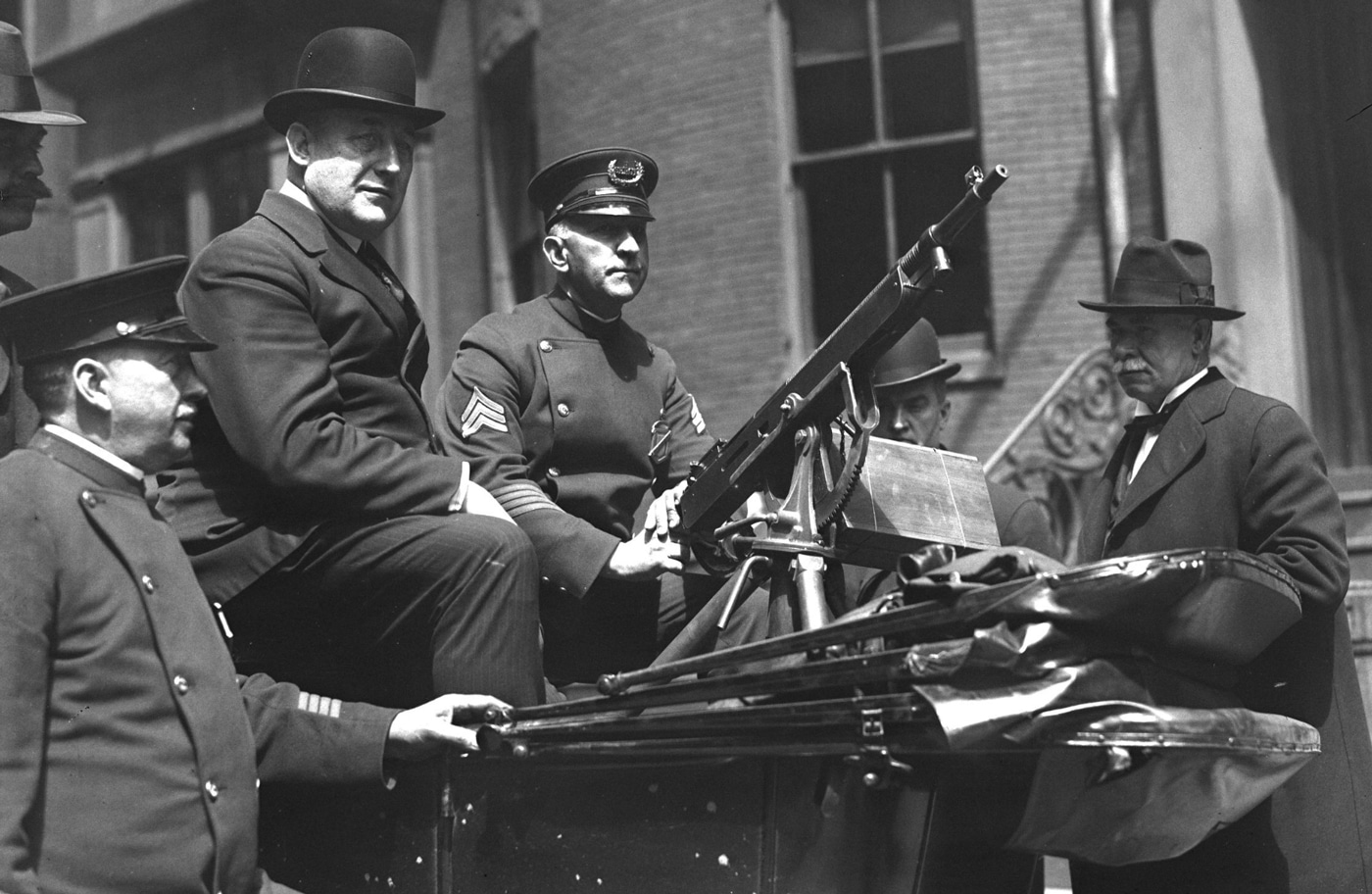
Michael Crowley, Superintendent of Boston Police Department, and officers with a M1895 machine gun in preparation for communist rioting in 1920.
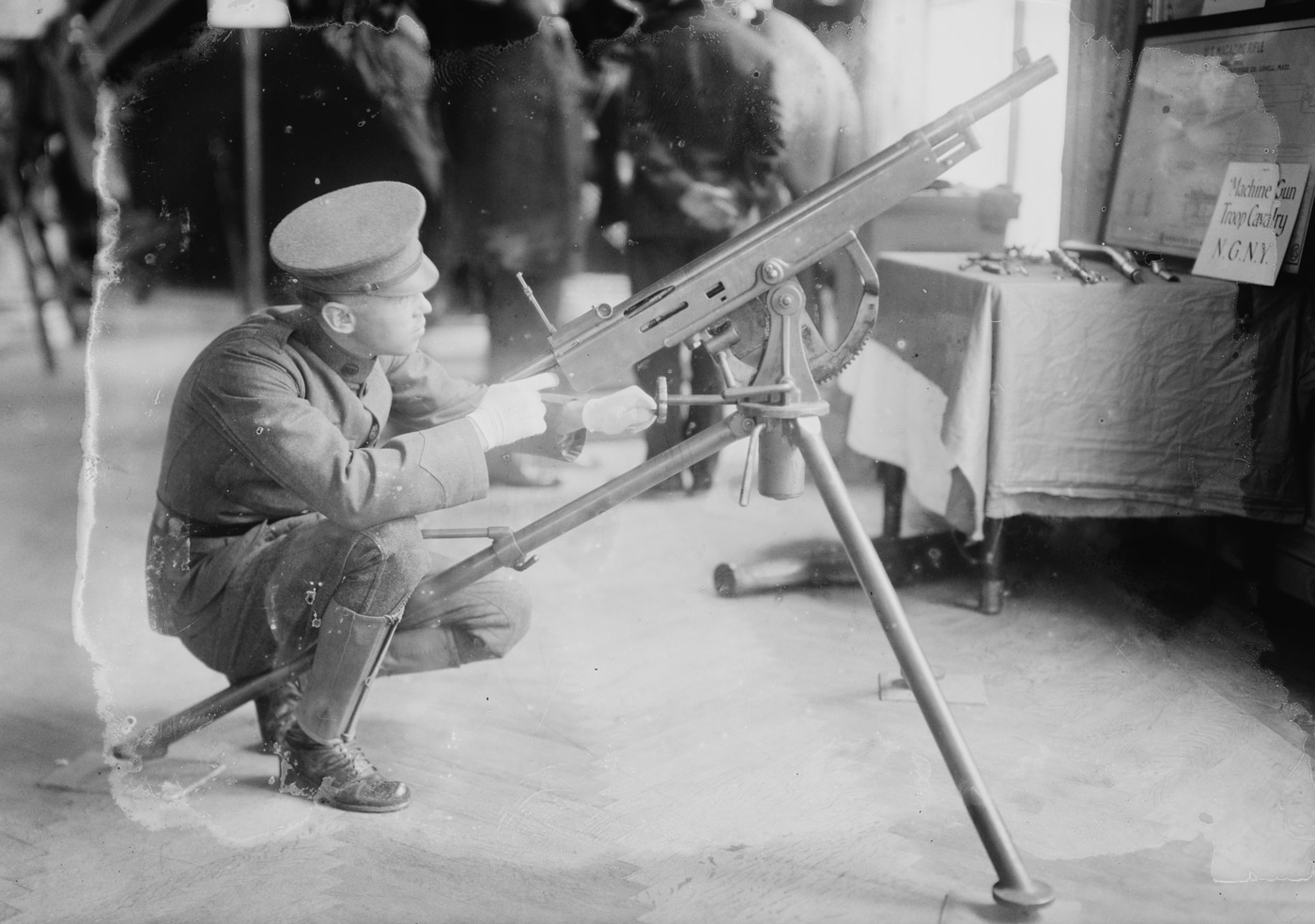
A Potato Digger machine gun on display at a war exhibition in New York during 1915. Image: LoC
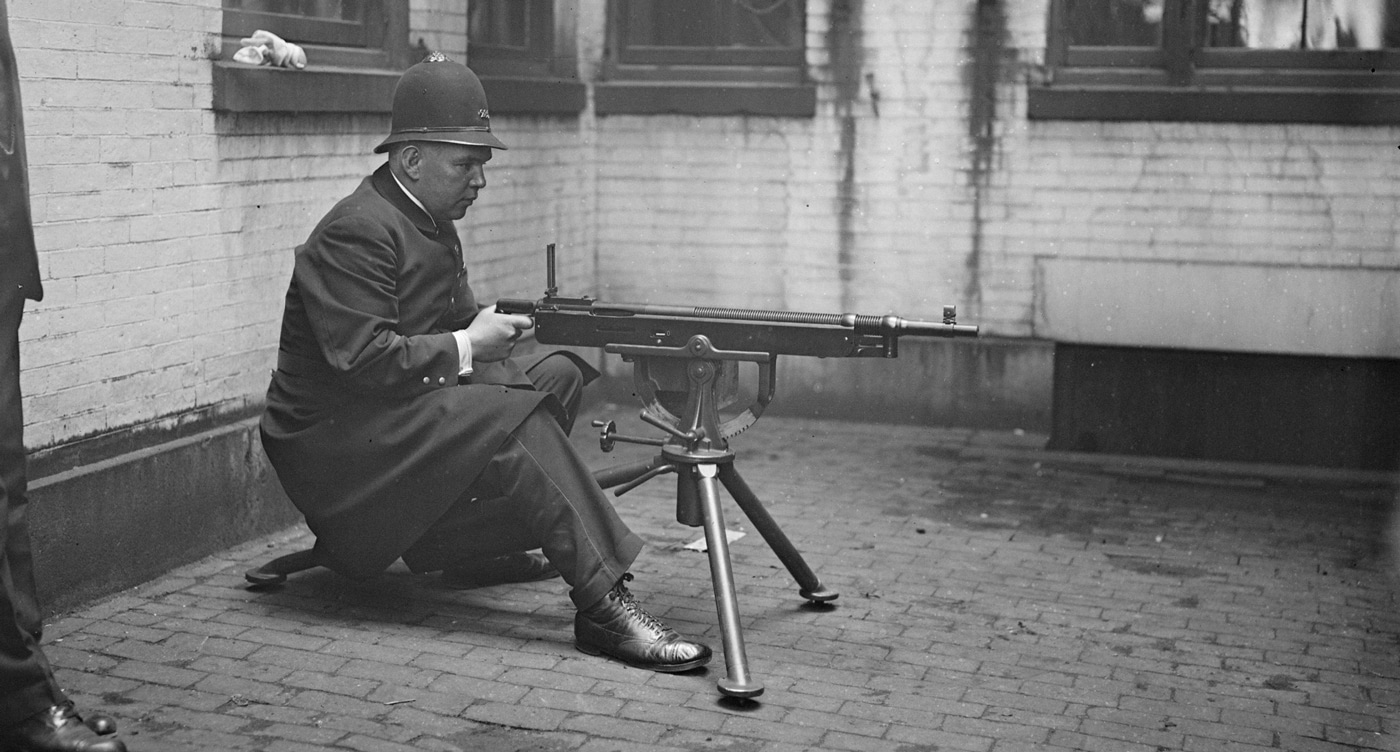
A police officer with the Boston Police Department poses with a M1895 machine gun. The department received the gun after the U.S. entry into World War I.




